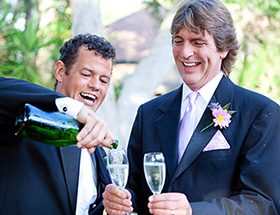Order I. Government and Defence. Order II. Literature, Art, and Science. The following were the numbers in certain specific occupations in each of the Census years and —. The total number of this class amounted to ,, of whom , were males and , were females. Order III. Order IV. Personal Offices. Of these, 1, were returned as hotel-keepers, of whom were females. Many persons returned as hotelkeepers should, from the actual nature of their operations, be classified in Order X.
In this order there are males returned as cooks. The number of domestic servants, that is, servants living in households or families, as distinguished from servants in inns or eatinghouses, clubhouses, or institutions, amounted to 12,, of whom were males and 11, were females. Of these, males and 6, females were under 20 years of age. The aggregate of these two groups may be taken as representing the total number of the class of servants who were permanently employed in connection with household work, excepting the persons returned as housekeepers, who numbered It embraced 21, persons, of whom were females.
Order V.
- mature gay dating Waitakere New Zeland.
- Big Barrel | Online Liquor Store NZ. Mount Gay Black Barrel Rum ml.
- bear gay escort Gisborne New Zeland.
- serious dating app gay North Shore New Zeland.
Order VI. Carriers of Goods and Messages. The numbers were as follow:—. The total number of persons in this class amounted to 54,, of whom were females. It must be understood that this number does not include the total number of persons who are immediately dependent on the prosecution of pursuits in this class, as the wives and families of the persons engaged have been classified in Class II. Domestic, except when a specified occupation of a wife or member of the family has been given, or that the son or daughter of a farmer, if above 15 years, is living at home.
- Wedding Invitations Napier Hastings, Browse New Zealand Wedding Cards.
- i am gay Pakuranga New Zeland.
- Reuben Paterson.
- Local Gay Dating Site: Single Men Seeking Men In Hastings, Hawke's Bay, New Zealand.
- Meet men seeking men for the long-term!
- List of Chief Censors since 1916!
The number of persons engaged about strictly agricultural pursuits was considerably larger than in , while the number engaged about pastoral pursuits showed little difference. The number of persons classified as farmers and market-gardeners male and female increased from 16, in to 19, in There was a slight decrease in the number of farm- servants and labourers. The persons classified as runholders, graziers, sheep- and cattle-dealers, amounted to in , against in The station or grazing-farm servants and labourers increased from 3, in to 4, in The fishermen increased from in to in The term, however, is used here in a far more comprehensive sense, and includes all persons working or dealing in art or mechanical productions, in textile fabrics and fibrous materials, in foods and drinks with the exception of those that are engaged in board and lodging and inn-keeping, included in the domestic class , in animal and vegetable substances, and in metals and minerals.
The total number of persons in this class in amounted to 64,, viz. Order VIII. Workers and Dealers in Art and Mechanical Productions.
Meet men seeking men in NZ: try our gay dating app! | EliteSingles
There was a small decrease in number of makers and dealers in musical instruments; the number, however, having been small in each year, viz. Lithographers only increased from 53 to Watch- and clock-makers increased in the three years from to Persons employed in making or dealing in machines and tools amounted to , against in The ship- and boat-builders were in number; the increase having been small since , when the number was The Building Sub-order included 10, persons, or 7 per cent, of the male population over 18 years of age.
Of these, 6, were carpenters and joiners. Order IX. The number of persons returned as engaged in woollen manufactures increased from in to in This number, however, is less than the actual number engaged in that industry, owing to the want of definiteness in the returns in the Census schedules, for the special returns of industries give the number occupied in woollen manufactories as Similar remarks apply to many industries.
Gay dating: meet great Kiwi men, find lasting love
The wanting numbers are included in the indefinite class. The milliners and dressmakers amounted to 3, females, of whom 1, were under 20 years of age. Of the 11, persons in this order, 5, were females; of these, 2, were under 20 years of age. Order X. Persons Working and Dealing in Food and Drinks. This classification must be especially borne in mind in attempting to arrive at the number of persons occupied in either the manufacture or sale of fermented liquors.
The persons returned in this class as engaged in connection with the manufacture of stimulants amounts to , and 24 persons were returned as wine and spirit merchants. This number does not represent all engaged in that business, as many general merchants sell wines and spirits.
BERGMAN GALLERY
Order XI. Workers and Dealers in Animal and Vegetable Matters. Of these, were described as being engaged in fellmongering and wool-scouring, tanning, and 98 currying; 1, were engaged in saw-mills, and 1, were digging gum; 4 only were returned as engaged in paper-making. These numbers are, however, evidently far smaller than they should be, caused, doubtless, by labourers in connection with these occupations not specifying the occupations on which they were respectively engaged, and thus, instead of being classified in the order containing the occupation that afforded them employment, they are enumerated in other orders, as bushmen among the workers on land, or labourers undefined in the indefinite class.
The cause of such imperfection is that many persons do not care to read the instructions on the household schedule, or, if reading them, do not attend to them as required, not realizing the importance of giving with exactness the information in the form required.
Order XII.
Persons Working and Dealing in Minerals. All miners are included herein, and, among others, dealers in coal, manufacturers of bricks and pottery, road and railway constructors and labourers, and dealers and workers in precious metals. The miners numbered 14,, of whom 1, were returned as being engaged in coal-mining. Order XIII. Labourers and Others Branch undefined.
Wedding Invitations Napier Hastings, Browse New Zealand Wedding Cards
As the majority of these must have been more or less occupied in connection with some special industry, they would, had their occupations been fully given, have been distributed in the previous classes. In , 11, were similarly returned as labourers. Of these, belonged to the criminal classes. No information was given in respect of the occupation of 1, persons. Occupations of Females. The total female population in the colony on the 3rd April, exclusive of Maoris amounted to , Of these, , have been enumerated in the tables of occupations.
No occupation was specified in respect of 16 females; and the returns did not admit of any classification. Of the remaining 25, females, were returned as wives assisting in their husbands' business, females were assisting their parents on farms, were capitalists or owners of property not having any specific occupation, were supported by the public, and were in confinement or in the criminal class, thus leaving 23, females as having defined occupations.
Of these, the number in the professional class amounted to 2,, or, excluding 86 religieuses , to 2,; the number connected with education, including music-mistresses, having amounted to 2, In the domestic class there were 14, females having specified occupations exclusive of members of families engaged in domestic duties in their own households or assisting their husbands. The commercial class provided occupations for females exclusive of 25 female capitalists and 20 wives assisting their husbands.
The occupations were chiefly those of sales- and shop-women; 10 were described as clerks, and 22 were stewardesses. The agricultural class afforded employment to , in addition to 33 females described as landowners, and to the females who assisted their husbands or relatives.
The occupations in the industrial class included those of 5, females, of whom 38, returned as houseowners, cannot be deemed as having special occupations. The actual occupations, therefore, amounted to 5, The majority of these occupations were those connected with working and dealing in textile fabrics.
Of these, were engaged in woollen manufactories, were tailoresses, 3, milliners and dressmakers, seamstresses, sewing-machinists, and were engaged in making or dealing in boots and shoes; also were occupied about washing clothes. Of these, 30 were shop-women or apprentices, the branch of trade not being specified. On reference to the tables of combined ages and conditions of the people, it will be observed that there were , females over 15 years of age; of these, 37, were unmarried.
The wives and widows numbered 80,; of these last, 70, were engaged as wives or widows in domestic duties, or assisting in their husbands' business.

If allowance be made for the above 70,, and for females described as having property and not having any specific occupation, supported by the public, and in the criminal class, it appears that, of the remaining 45, wives, widows, and unmarried females over 15 years, about 23, had specific occupations, for probably very few of the specified occupations were of females under 15 years of age.
